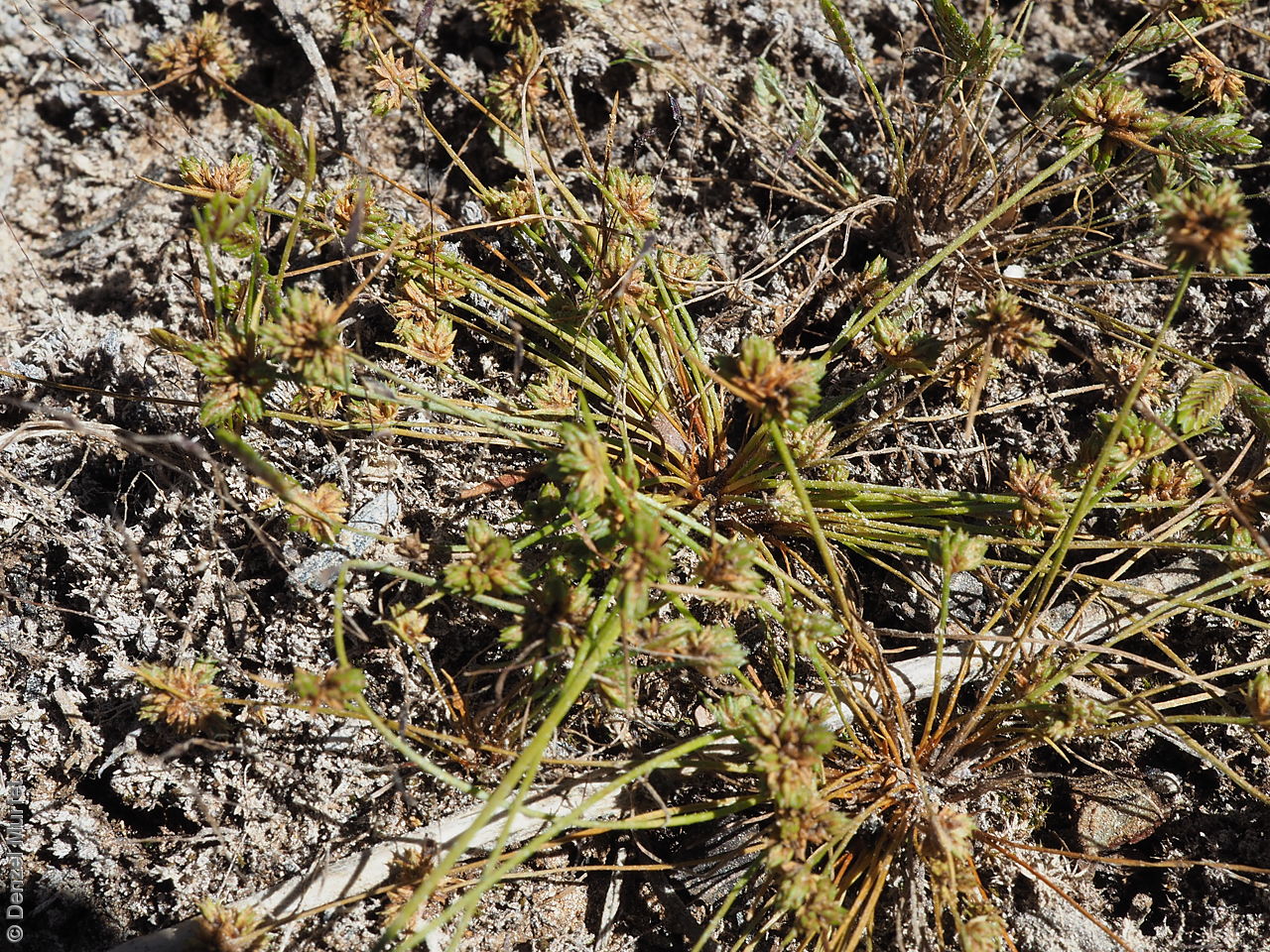
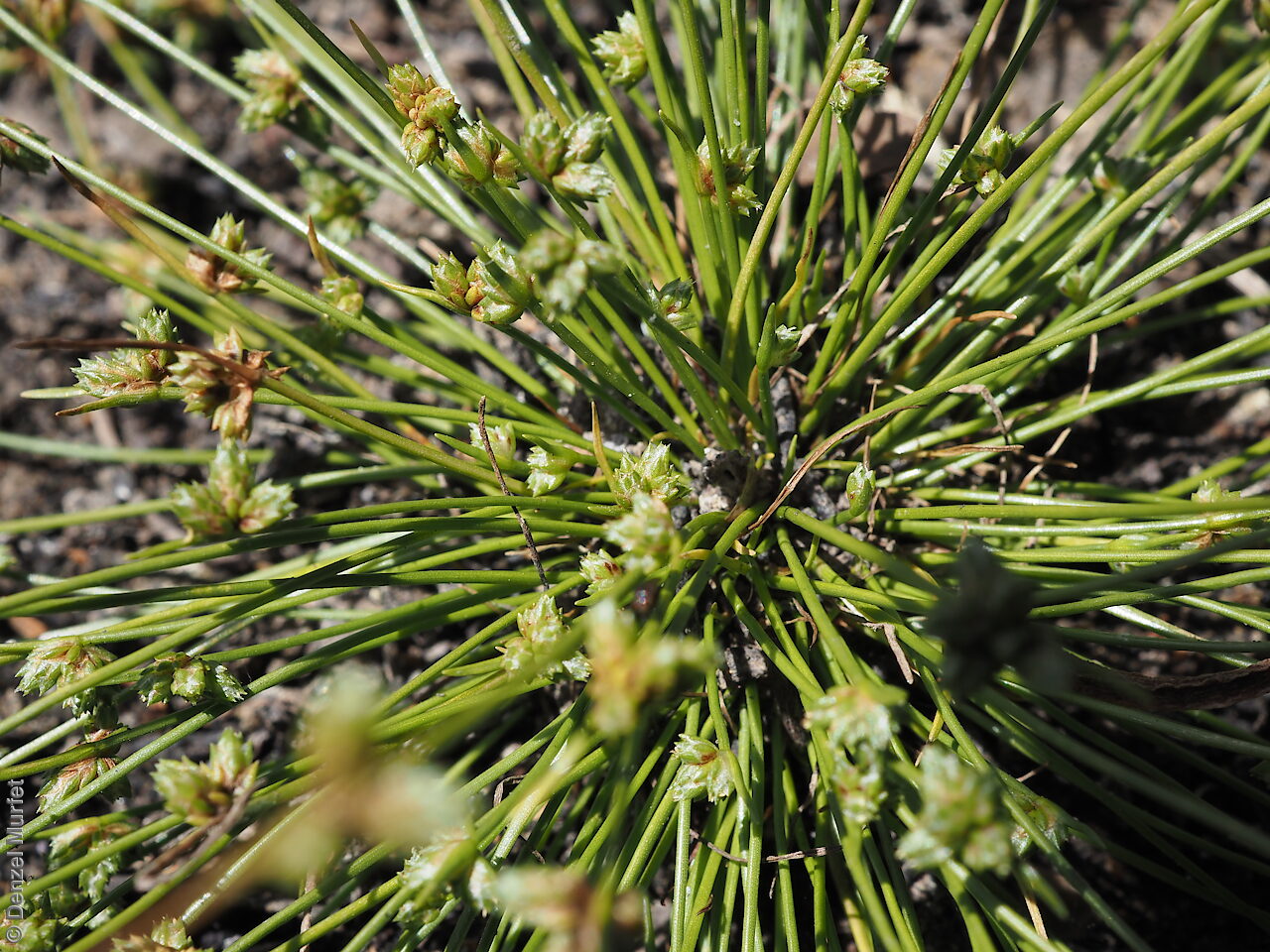
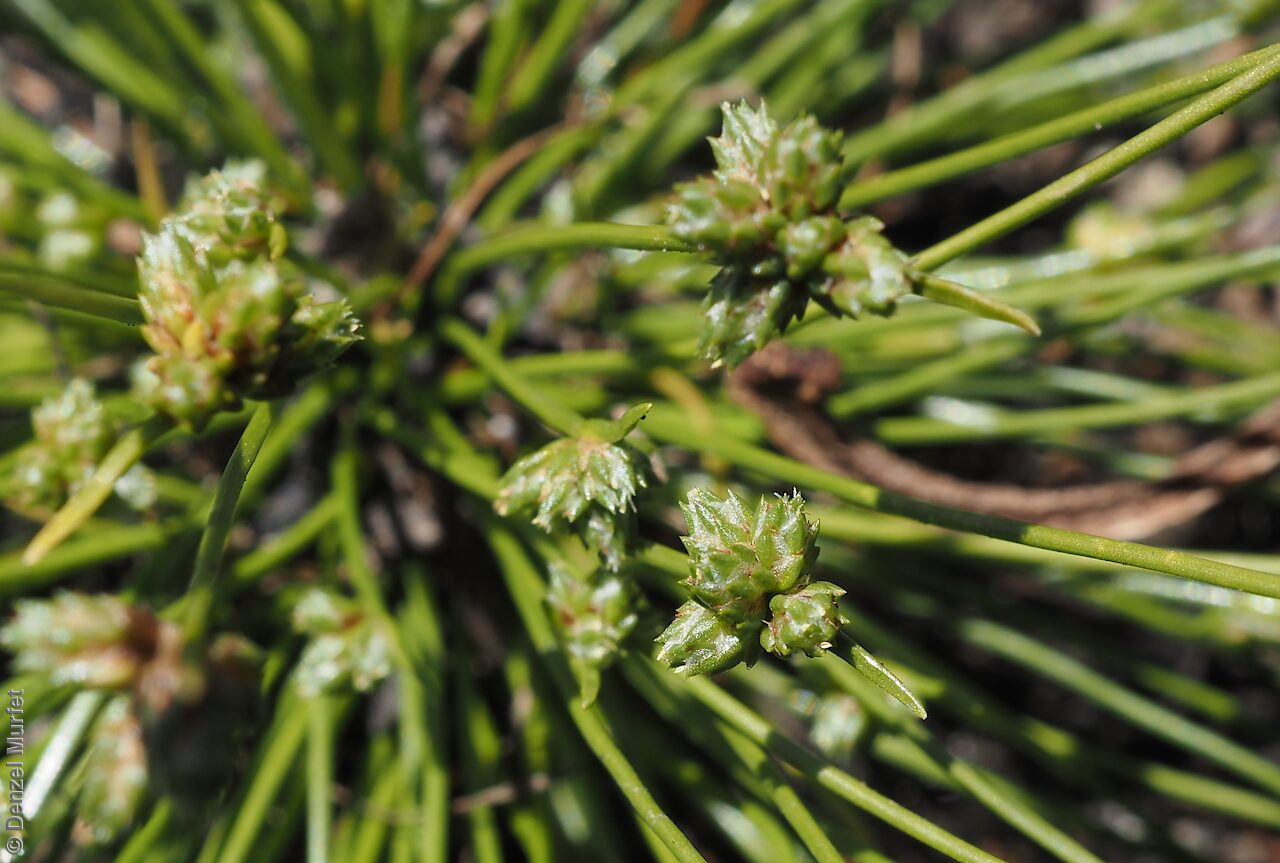
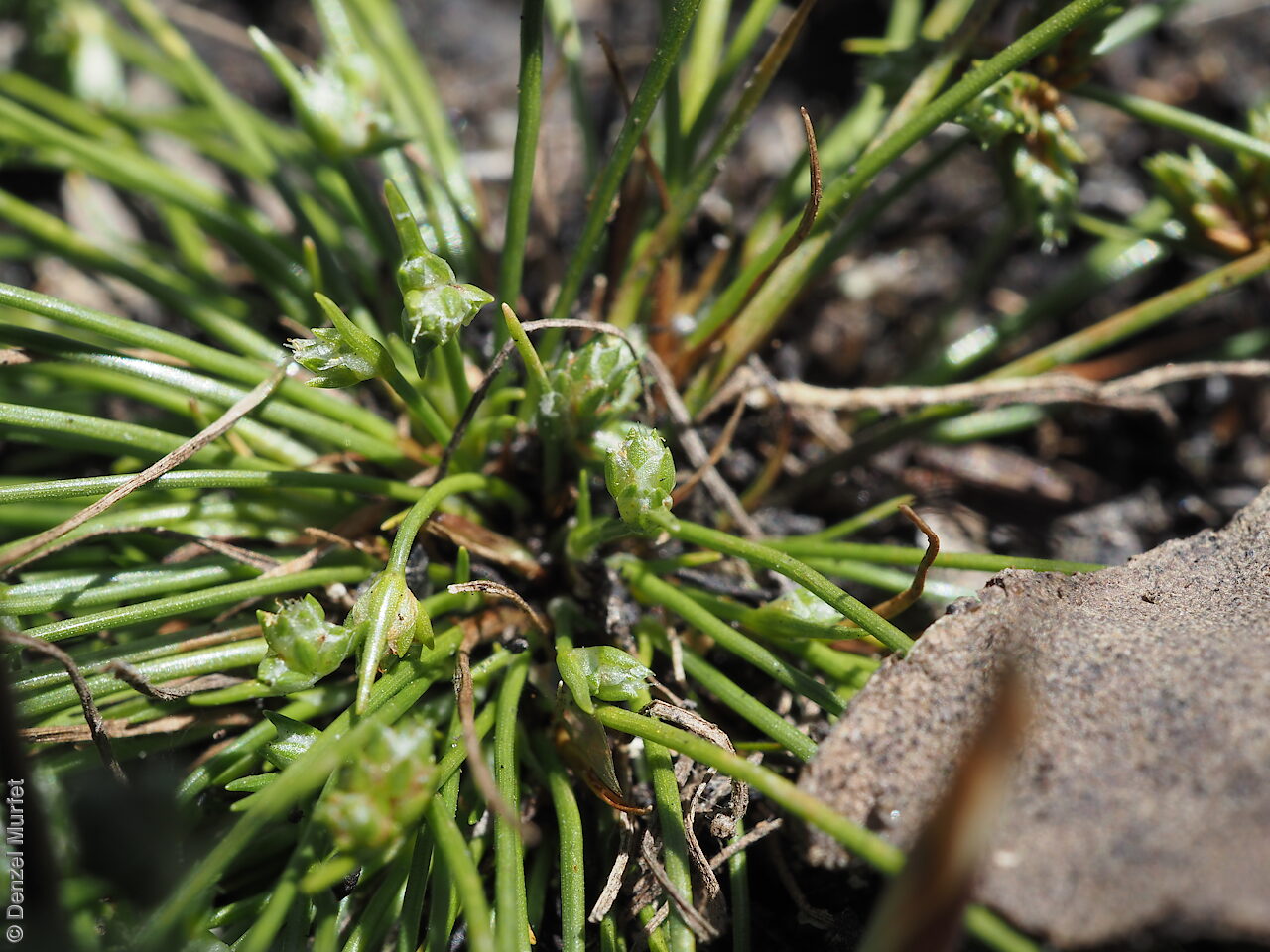
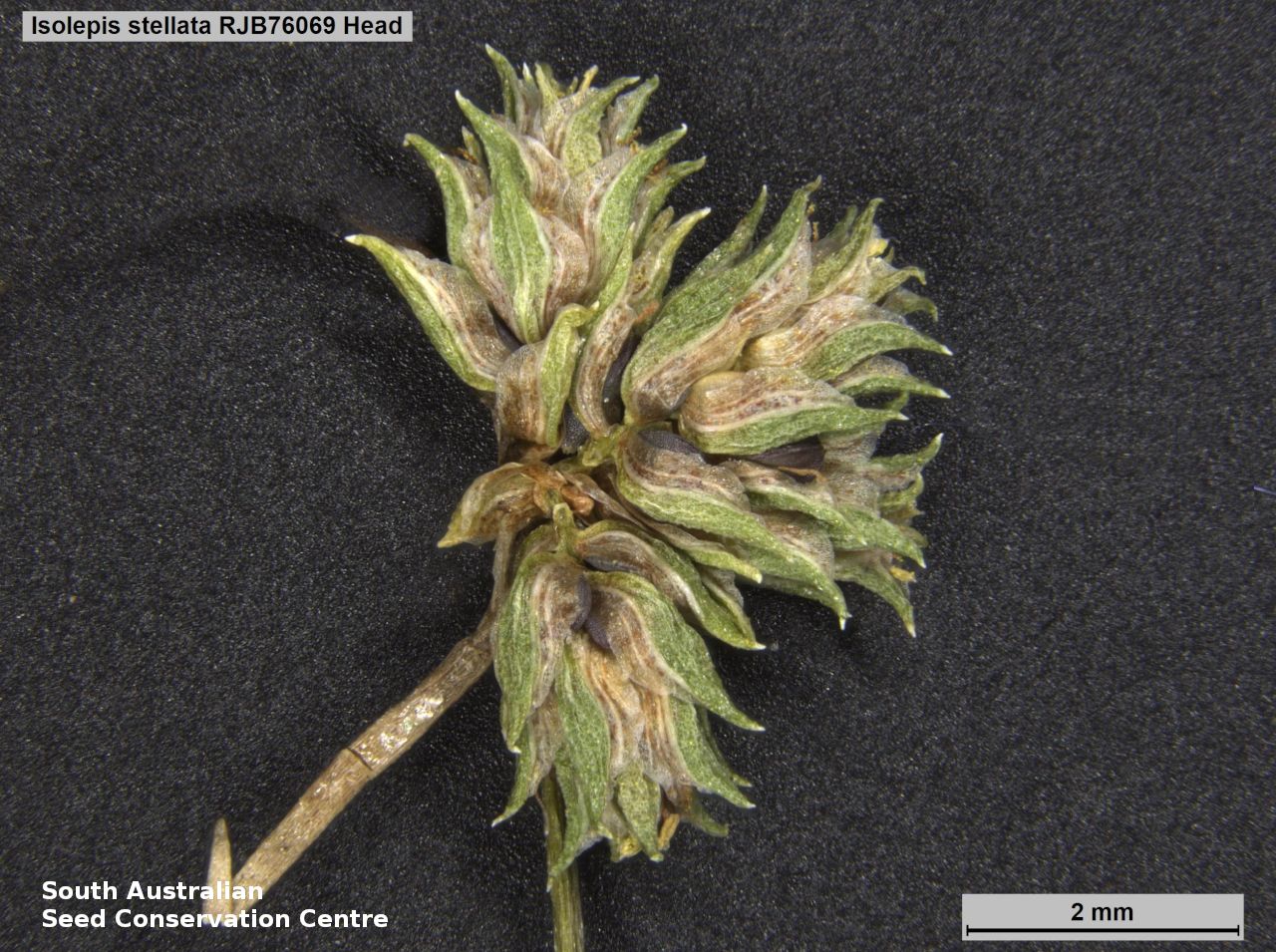
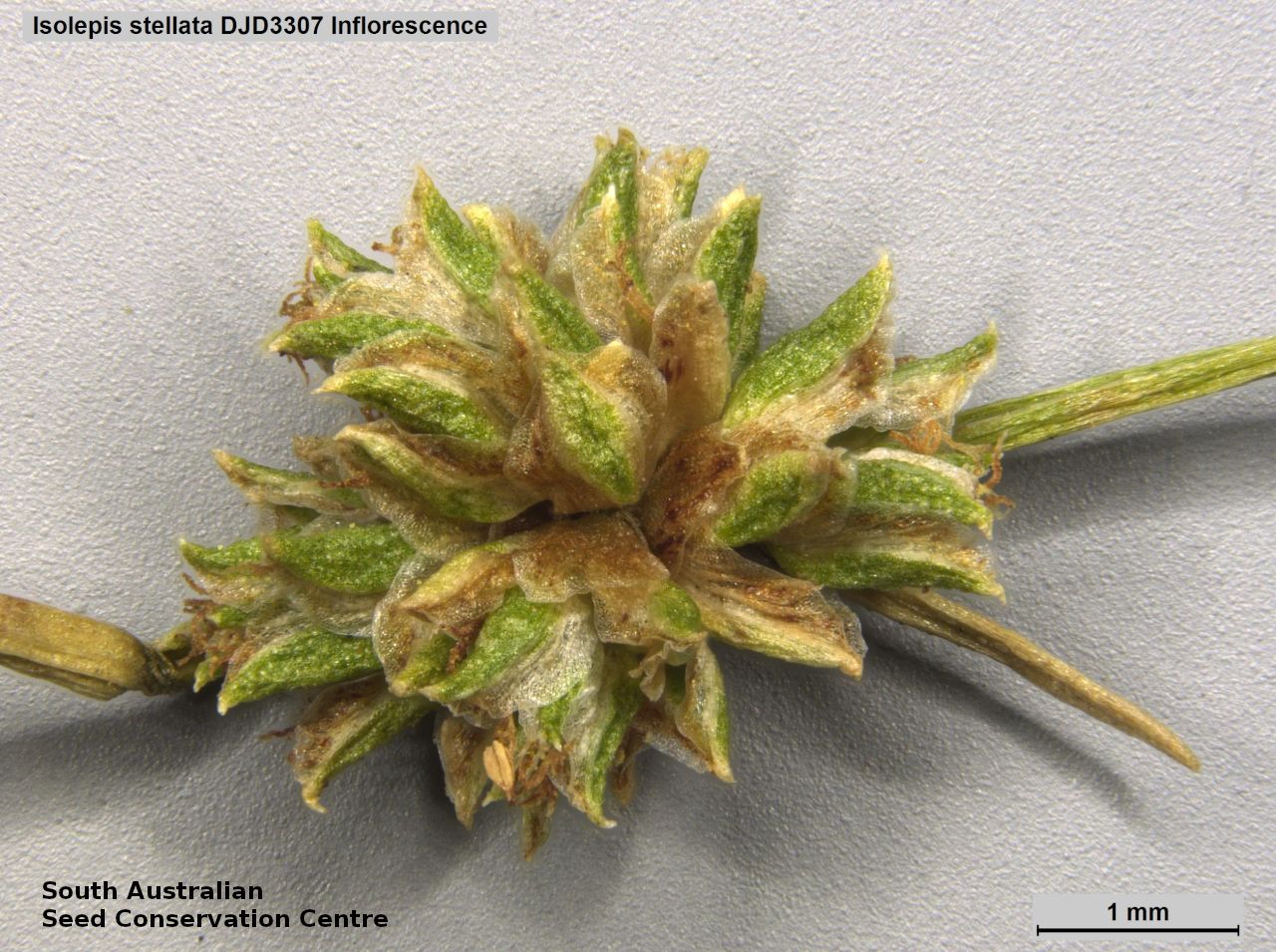
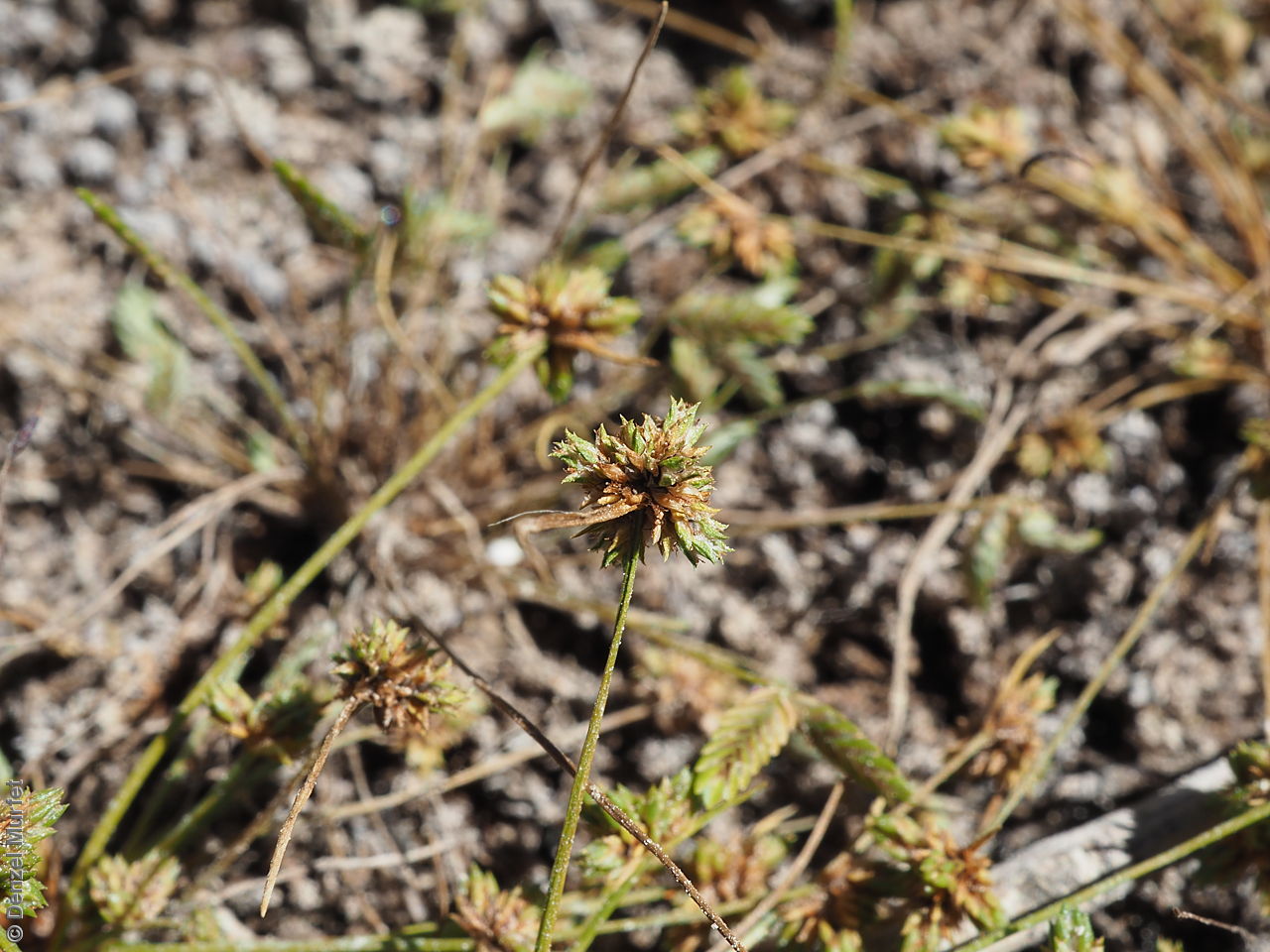
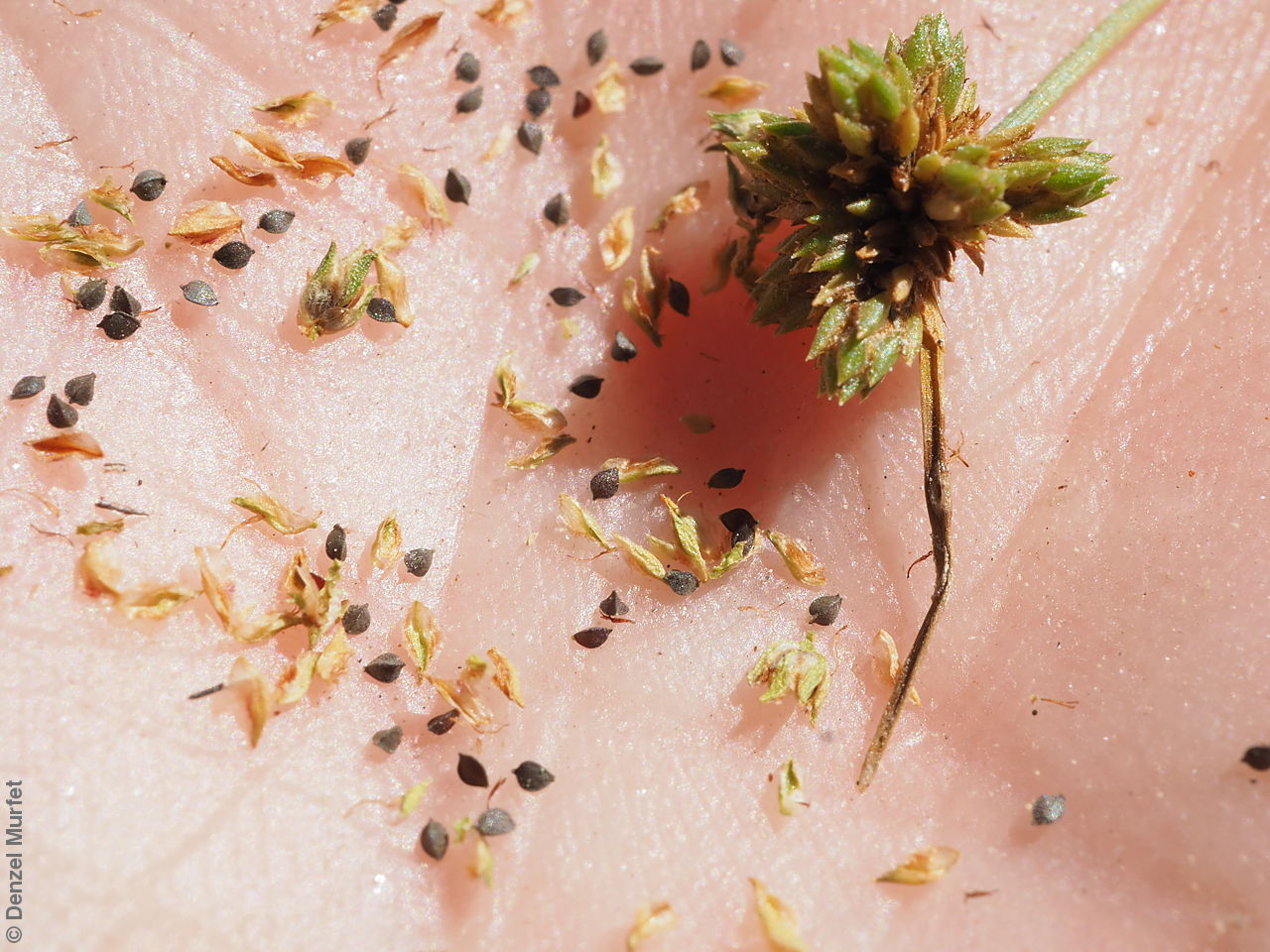
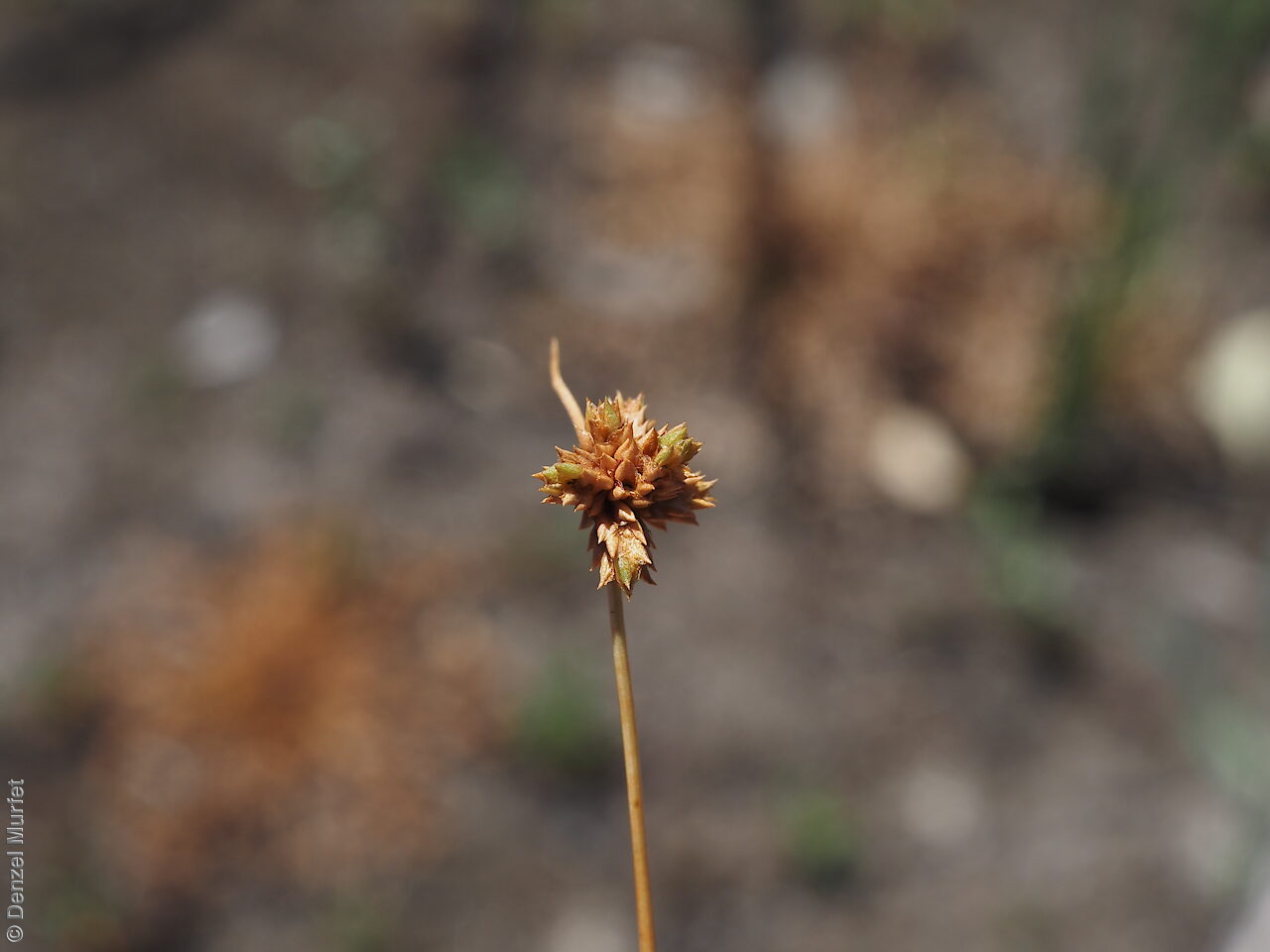
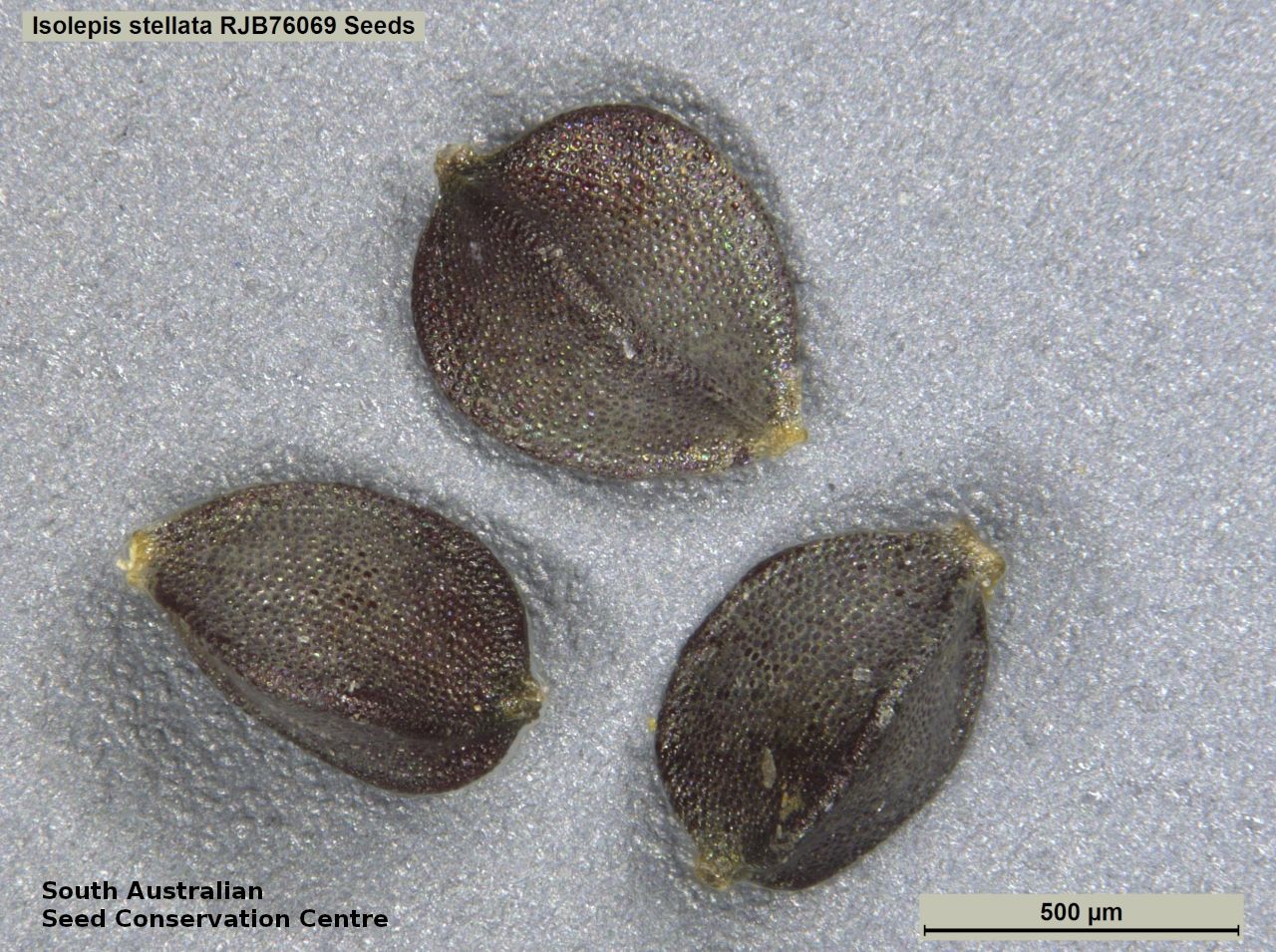
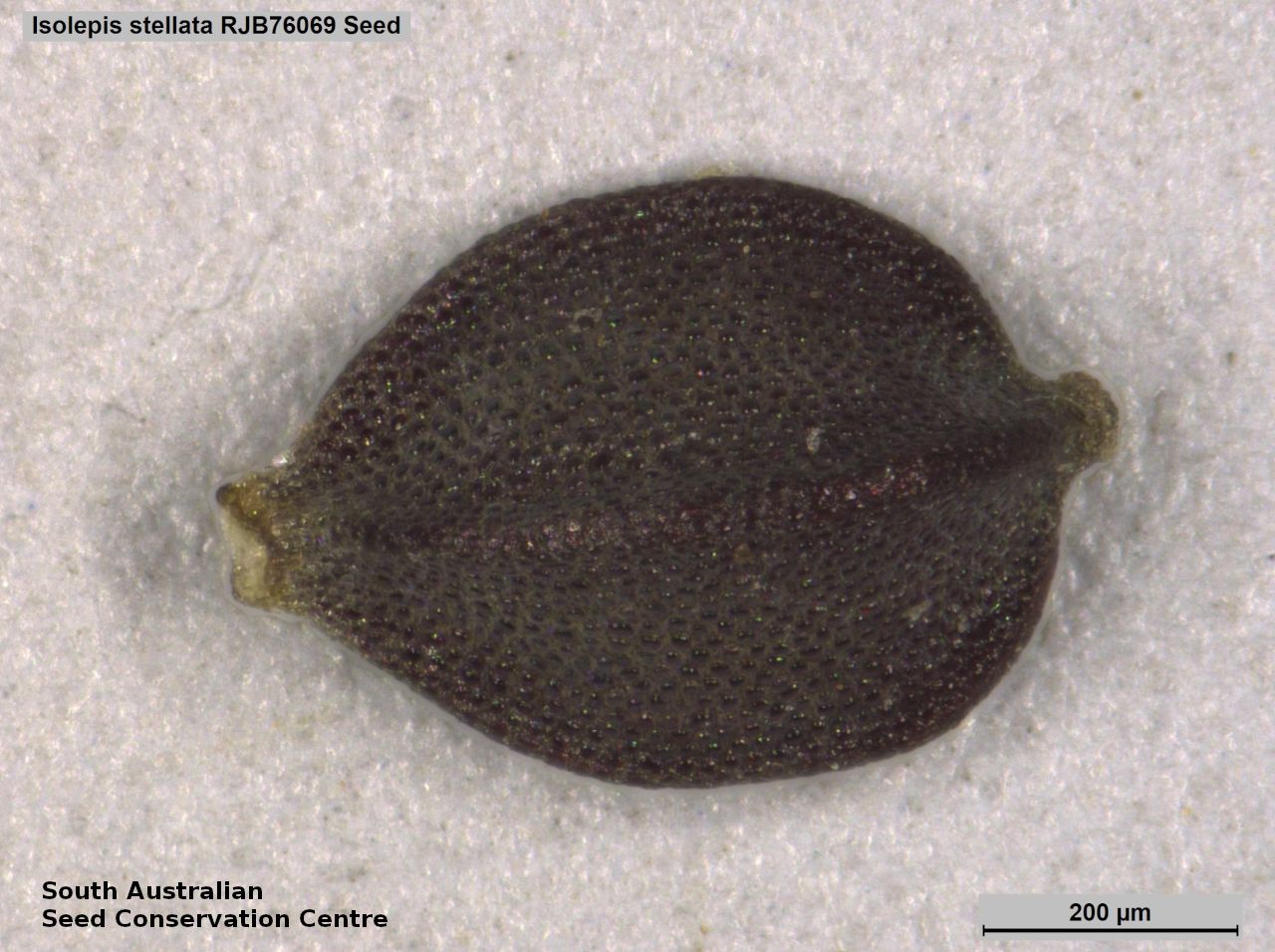
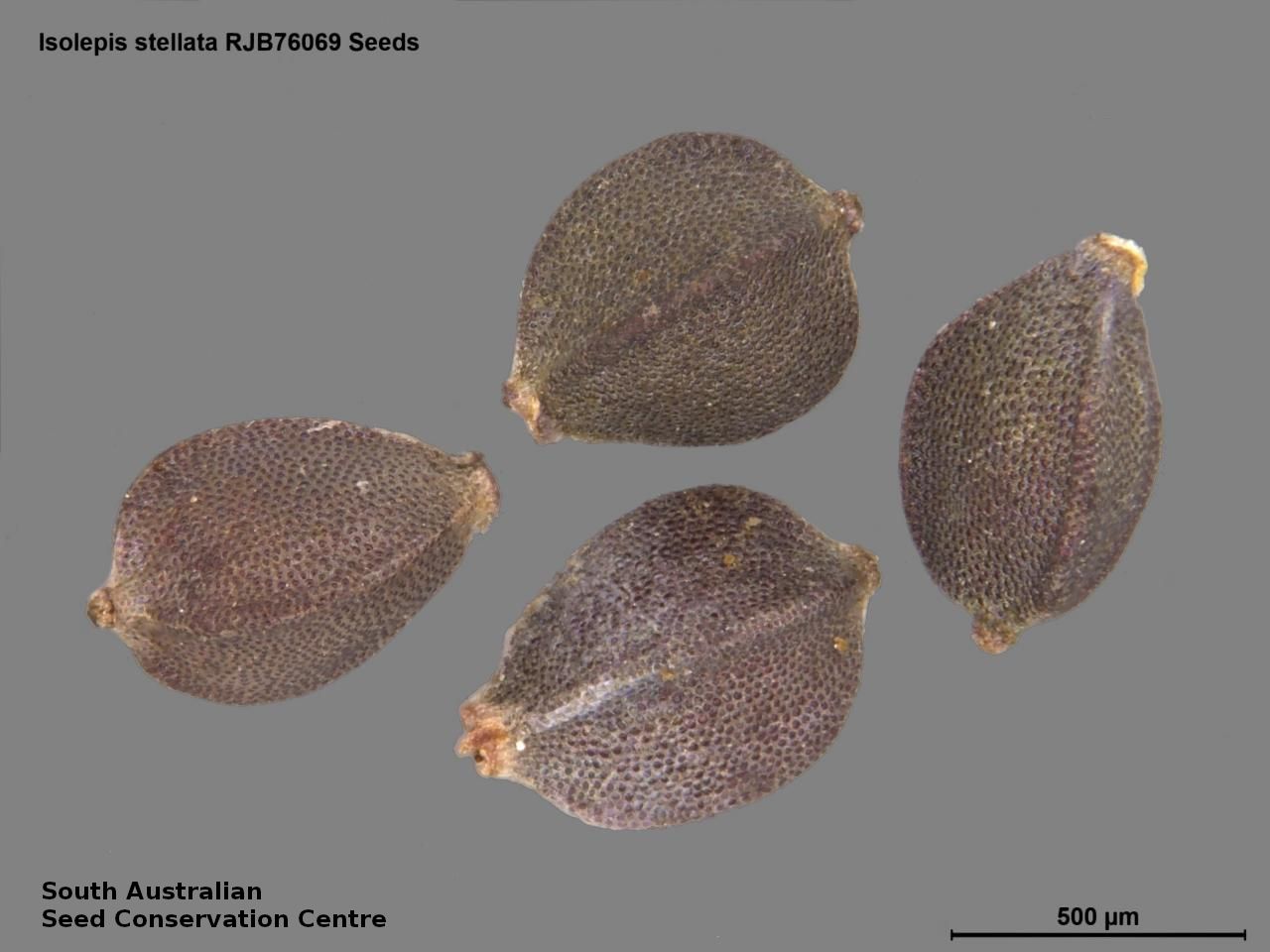

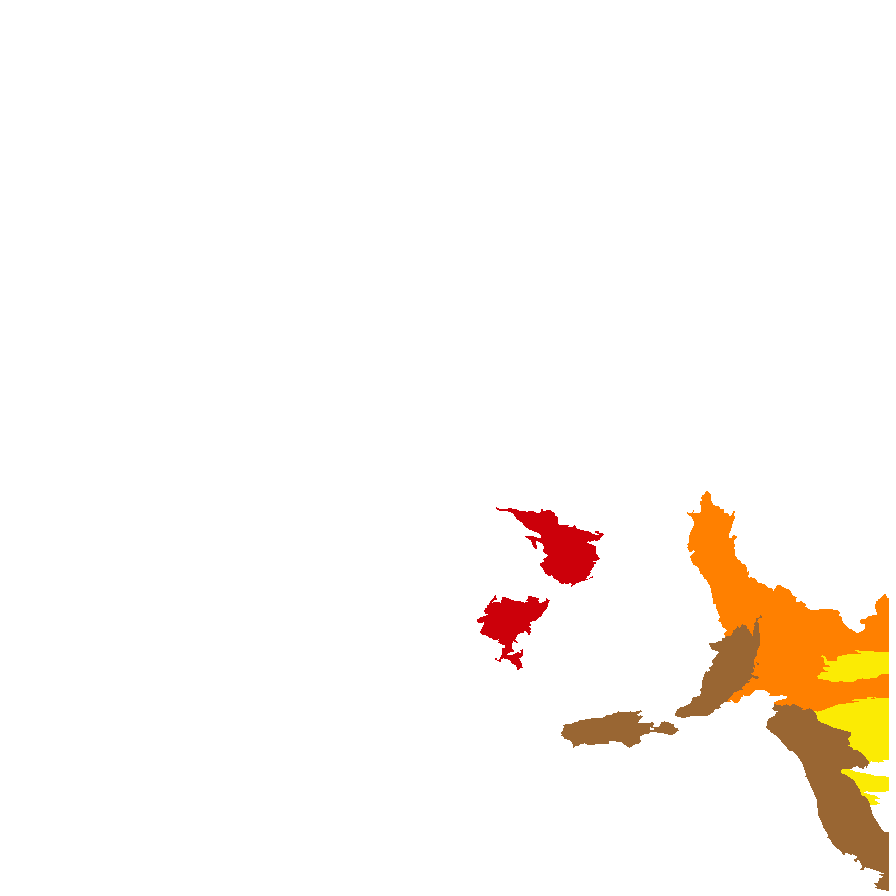
Botanical art
Prior names
Scirpus stellatus
Common names
Star Club-sedge
Star Club-rush
Etymology
Isolepis, from the Greek 'isos', meaning equal and 'lepis' meaning scale, referring to the glumes. Stellata, from the Latin 'stellatus', meaning with spreading rays, stellate or star-like, referring to the star-like shaped of the fruit-heads.
Distribution and status
Found on Kangaroo Island, Mount Lofty Ranges and the South-east in South Australia growing in seasonally wet area and seepage. Also found in Western Australia, New South Wales, Victoria and Tasmania. Native. Rare in South Australia. Rare in New South Wales and Tasmania. Common in the other States.
Herbarium regions: Eyre Peninsula, Northern Lofty, Southern Lofty, Kangaroo Island, South Eastern, Green Adelaide
AVH map: SA distribution map (external link)
Plant description
Slender tufted annual sedge to 6 cm high, stems rather rigid but very slender. Leaf blades setaceous, to 2.5 cm long or reduced to short points. Bract 1, erect or more or less thrown to one side, usually exceeding the inflorescence and to 7 mm long. Spikelets up to 8 in the cluster, rarely less than 3; densely packed and stellately spreading; oblong or ovoid-oblong, very obtuse, to 4 mm long, greenish, several-flowered; glumes rather spreading, the tip mucronate and also spreading; keel stout and broad; green sides stained with red-brown, each with 1 or 2 slender nerves. Flowering between October and February. Isolepis stellata can be recognised easily by the stout, recurved mucro at the glume apex. Fruits are brown fruit-head in clusters at the end of the stems. Seeds are dark-brown to black, ovoid-triangular seed to 0.7 mm long and 0.6 mm wide with a small tuberculate surface. Seed embryo type is capitate.
Seed collection and propagation
Collect seeds between October and March. Collect fruits either by picking off the mature heads;, those turning brown and come-off easily. Place the heads in a tray and leave to dry for one to two weeks. Then rub the heads with a rubber bung to dislodge the seeds. Use a sieve to separate any unwanted material. Be careful, as the seeds are very small. Seeds are black and hard. Store the seeds with a desiccant such as dried silica beads or dry rice, in an air tight container in a cool and dry place. From three collections the seed viability was high, ranging from 85% to 100%.
| Location | No. of seeds (weight grams) | Number of plants | Date collected | Collection number Collection location | Date stored | % Viability | Storage temperature |
|---|---|---|---|---|---|---|---|
| BGA | 129,000 (5.18 g) | 50 | 3-Dec-2007 | RJB76069 Southern Lofty | 19-Sep-2008 | 100% | -18°C |
| BGA | 10,800 (0.45 g) | 50 | 4-Nov-2007 | RJB75497 Southern Lofty | 19-Sep-2008 | 100% | -18°C |
| BGA MSB | 20,000 (0.77 g) 20,000 (0.77 g) | 200 | 1-Oct-2007 | RJB75129 South Eastern | 19-Sep-2008 | 85% | -18°C |
Number of plants: This is the number of plants from which the seeds were collected.
Collection location: The Herbarium of South Australia's region name.
% Viability: Percentage of filled healthy seeds determined by a cut test or x-ray.